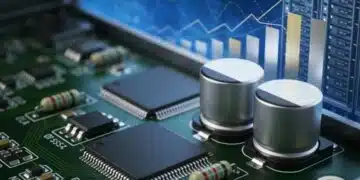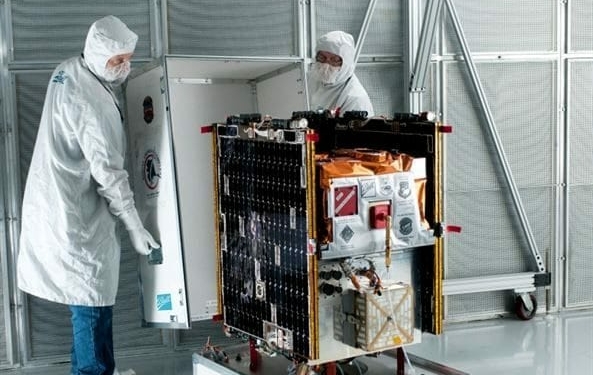source: Intelligent Aerospace news
By Dan Friedlander, Retired following 44 years in component engineering
The use of selected Electrical, Electronic, and Electromechanical (EEE) commercial off-the-shelf (COTS) components in space applications is slowly expanding – too slowly – and not free of myths. It is imperative to be aware of the pitfalls posed by these myths to reach a decision whether to use COTS parts in a specific space mission.
Myth 1: The main drive to use COTS in space is cost savings.
The use of COTS in space is not a paved road to cost savings. In order not to misinterpret the term “cost savings”, it should be emphasized that for an EEE component the following applies:
Component Ownership Cost = Component Pre-procurement Cost (NRE) + Component Procurement Cost (RE) + Component Post Procurement Cost (NRE).
When somebody reports a cost savings of “X%”, that alone is meaningless if the “100%” reference is not specified. What is the “100%” reference? I assume the COTS are compared to use of space/military traditionally processed components. Is the comparison “apple to apple” (e.g., ownership cost versus ownership cost, etc.)? Is the specified “X%” cost savings calculated at component level, board level, subsystem level, etc.?
The main reason to go for COTS is market non-availability of traditional level components due to diminishing sources. COTS is the way to go if one wants to survive global developments. Cost savings is an important goal, but not at any cost. If not approached with technical reasoning, the cost savings is a dangerous pitfall. Engineering judgment shall overcome man’s weakness (for money).
Unbiased cost savings assessment shall be performed in order to ensure proper decision making. Of course, the penalty for the cost savings (e.g., risk, etc.) shall be assessed as well. Remember there is “no such thing as a free lunch.”
Myth 2: Incorrect interpretation of the term “space qualified”
The term “space” is a general term for the rest of the universe above an altitude of 100 kilometers (km). The environmental requirements to be met by EEE components participating in different space missions are various, depending on many parameters like orbit, mission duration, mission timing, etc.
The term “space qualified” shall be fully understood in context of the specific component specification and in context of the intended application. A space-qualified component, even in MIL-SPEC (military specification) terms is not necessarily suitable for use in space applications, unless it meets the intended application requirements.
Myth 3: Incorrect interpretation of the term “space heritage”
The often-used term “space heritage” shall be fully understood in context of the specific mission usage. The relevancy of the heritage to a new intended mission shall be deeply analyzed. It may happen that the heritage is irrelevant to the subject mission. The space heritage of a wrongly selected component shall not be an excuse to sweep the issue under the carpet. Rectify the mistake.
Myth 4: Use of terms “quality” and “reliability” interchangeably
Quality and reliability are often used interchangeably to describe product failure rates, but the two terms actually describe two entirely different aspects of the behavior of a part over its lifetime.
Quality measures the manufacturing process, while reliability evaluates the effect of part quality over time. Quality is an assessment of the manufacturing and test process. It measures how well the facility produces parts that match the specifications and how often the process produces faulty parts. Quality is the conformance to requirements at the start of use.
Reliability is the probability of parts to meet the relevant specification over the time, under the worst operational conditions. Reliability is quality changing over time. In other words, quality is a snapshot at the start of the life and reliability is a moving picture over the life.
Myth 5: COTS reliability cannot be ensured, unless they are 100 percent tested and screened.
It is clear that reliability cannot be tested into the part. The qualification and screening are not considered as a substitute for manufacturing control, but rather as risk-mitigation measures. Consequently, the way to address the reliability issue is by Statistical Process Control (SPC). The process (design followed by manufacturing) builds reliability into the part. Statistical validity, is meaningful for high-volume production, such as in the production of COTS.
The term “high-reliability” or “hi-rel” is used exclusively for space/military. It is wrong to conclude that by definition all COTS are non-hi-rel parts. There is an urgent need for the policymakers to prioritize conceptually the process control methodology.
Myth 6: Meeting absolute quantitative limit of reliability is required in technical specifications in order to achieve the needed mission reliability.
Such a requirement penalizes the use of COTS. The reliability prediction models have their own limitations. MIL-HDBK-217F explicitly states its limitations: “a reliability prediction should never be assumed to represent the expected field reliability.”
A misinterpretation may lead to unjustifiable extra cost. As MIL-HDBK-217F admits, “those who view the prediction only as a number which must exceed a specified value can usually find the way to achieve their goal without any impact on the system.” In other words, number manipulations cannot alter the actual system reliability.
Myth 7: Plastic encapsulated semiconductors (PEM) cannot be used for space applications.
The problems encountered in early stages (from the 1960s) with non-hermetic plastic encapsulated semiconductors caused the military and space parts policymakers to taboo (avoid or ban) their use in military and space applications. Of course, the “hermeticity” of the plastic parts cannot compete with the hermeticity of the hermetic parts. The issue herein is not who is the winner. If properly stored, there is no problem using non-hermetic components in space.
Officially, there are still unjustified restrictions regarding the use of non-hermetic components in space.
Policymakers have to realize that reality is stronger than the resistance to change. Keep an open mind.The benefits of using selected COTS in space applications are obvious: advanced technologies, higher integration, higher performance, better size, weight, and power consumption (SWaP) achievements etc.
Myth 8: COTS manufacturing is not controlled sufficiently.
The history does not show that a central control has been efficient for military components. In view of the improved process control (SPC) and high-volume statistics validity, the lot-to-lot and within-a-lot variation is better. This issue is important for radiation testing.
It has to be mentioned that the military-level qualified components (widely used in space) and COTS have the same lack of die traceability problem of not being wafer traceable. The space industry turns a blind eye on the lack of wafer traceability for traditionally accepted military level parts, but penalizes COTS in space because of the same traceability issue!
Procurement strategy can contribute to not mixing lots.
Myth 9: Success in space missions can be achieved only by means of a conservative approach.
The name of the game is risk management. Space missions are inherently risky. No approach, not even a conservative one, can avoid failures. A conservative approach has its own value at a given knowledge level, at a given technology availability status, at given global conditions, etc.
Today, there is enough proof (see U.S. private space industry) that progressing with a more liberal approach is a valid way to success.
Unfortunately, faithful followers of the outdated conservative approach are still resistant to change. Outdated standardization, innovation-repressing culture, and bureaucracy (e.g., requirements for too much documentation and paperwork) are just a few factors that slow space industry development.
There is more than one way to success.
Myth 10: Redundancy is a magic solution to enable the use of softer components.
Redundancy, if found necessary, is a good practical solution for lowering the probability of system failures. However, it has its limitations. The same type of components are expected to fail independently in the same design. The probability of multiple failures of the same component type is calculated to be extraordinarily small. This may be outweighed by other risk factors, such as human design error, generic failure modes, etc. Redundancy implementation with different designs designed by different teams is a truer one.
Any redundancy comes with its size, weight, power, and cost (SWaP-C) penalty that can be significant.
Conclusion
Myths mislead.
About the author
Dan Friedlander graduated engineering school (Tel Aviv University, 1965-1969) with a degree in physics. He has 44 years of experience in component engineering at MBT/Israeli Aerospace Industries (1969-2013).
As head of components engineering, he was responsible for all aspects of EEE components (policymaking, standardization at corporate level, approval, etc.) for military and space applications. He retired and started a consultancy in 2013.
































